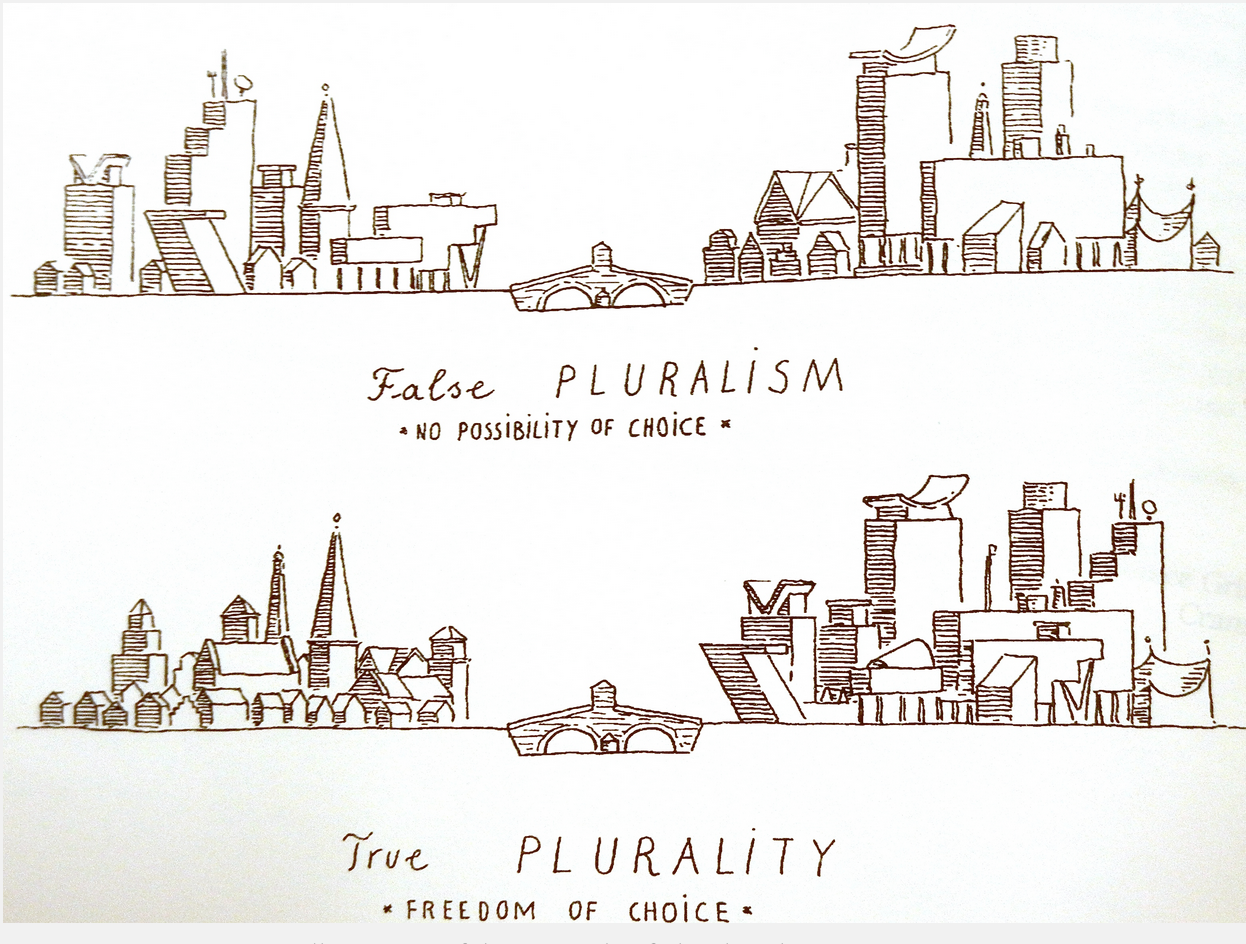Below is the foreward to Léon Krier’s book The Architecture of Community (2009), which I posted on my blog in 2020. Born in Luxembourg, Krier, is, of course, among the foremost thinkers about architecture and city planning. Above his foreward I posted my favorite from his collection of drawings that illustrate principles via the conundrums faced by architects and city planners. Here is the foreward to Krier’s masterful volume:
***
Recently, a delegation of developers and planners from Shanghai and Singapore visited Poundbury, the new town I have been master-planning for HRH Prince Charles since 1988 in Dorset, England.
After my presentation, a representative from the Chinese delegation came to me, saying. “You must come to China. We want Poundbury in Shanghai.” I responded that for his country I would of course design a Chinese not an English town. “No, no,” he cut in, “we want English Poundbury. It will have much success.” When I replied that it would be as unsuitable as planting a palm tree in the Siberian tundra, the gentleman shook his head and walked away. After him the delegate of Singapore addressed me: “Mr. Krier,” he said, you must come to Singapore. We want Poundbury with skyscrapers.” When he understood that my skyscrapers would have no more than three to five floors, he too frowned in disbelief and turned on his heel.
This is to say that the present book is not about exoticism, not about the brief thrill of consuming imported alien products, not about promoting trendy European goods for globalized markets, cultures and climates.
The Architecture of Community is about something more fundamental. It is about re-establishing our own traditional forms and techniques of building and settling. The devastation of the traditional Chinese building heritage is causing headlines worldwide. Yet I am less alarmed by the loss of material than by the loss of the ideas which generated and perpetuated it for thousands of years. I am not merely talking about saving historic buildings and towns but saving the technology which created and sustained those forms, made them to be desirable and to be emulated for hundreds of generations. I am suggesting that architects and planners become primordially concerned, not with the historicity of traditional architecture and urbanism but with their technology, with the techniques of building settlements in a specific geographic location with its natural materials.
It is tragic that more and more intelligent minds should at once be spellbound by that undecipherable Spirit of the Age (Zeitgeist) and so indifferent to the Spirit of Place (Genius Loci), the conditions of nature, of local climate, topography, soil, customs, all of them phenomena objectively apprehensible in their physical and chemical qualities.
This book advocates not to respect, study and use traditional ideas because they are historical, but where and when they are relevant for us the living, essential for our well-being. They are repositories not merely of humanity, but of humaneness and ecology.
Human scale, as we now discover when too many of our built environs have lost it, is an unrenounceable attribute of civilization, not an obsolete luxury. We demonstrate here, by vision and example, how human scale can become again the yardstick of modern artifacts, adequate for our bodies and souls, for both our limited physiological capacities and our infinite desires, be they tools, buildings, cities or landscapes.




The economic forces from 1780s to early 1900s that built cities up into the high density clusterfuks , of steam, steel and stockyards were quickly and swiftly supplanted by the economic decentralization forces that emptied out our cities happened in little as 20-30 years after that. It was not the Car; it was…
– horizontal manufacturing: which was more land intensive but allowed cheaper goods and shifted labor to move away from urban locations to have better access to jobs
– electricity: which rendered steam power near water front industry and and dangerous flammable lighting obsolete.
– telephones ☎️: whom instantaneous contact allowed companies to decentralize their operations to satellite offices and allow for secure wire transfers of money allowing us conduct commerce thousands of miles.
throughout their history cities were rarely if ever tolerable or nice places to live til advent Modern water closet and adoption daily hygiene tools.
urbanism is just bullsxhit revisionist history that cities were wonderful places and evil urban planners like Moses and Corbusier just bulldozed it with people when reality is most these areas were abandoned they had population densities of suburbs in downtown areas. Reality is we left because public services became crud, political corruption ubiquitous and black/latino crime intolerable.
LikeLike
THANK YOU for keeping in the thought lane.
LikeLike